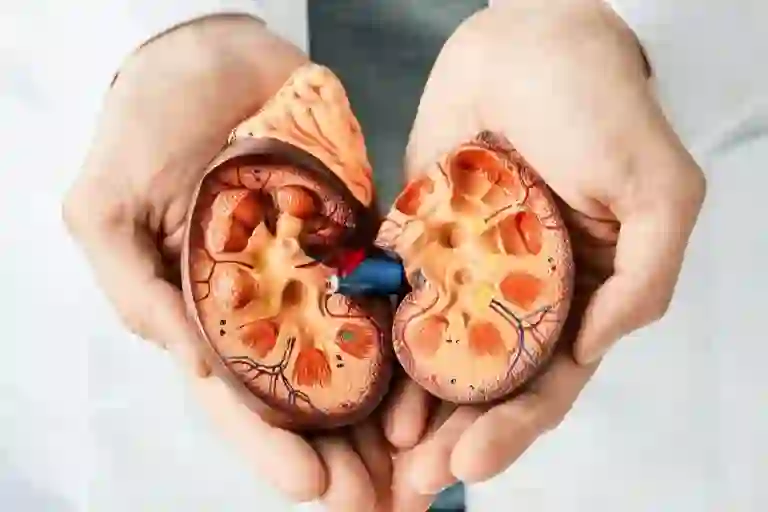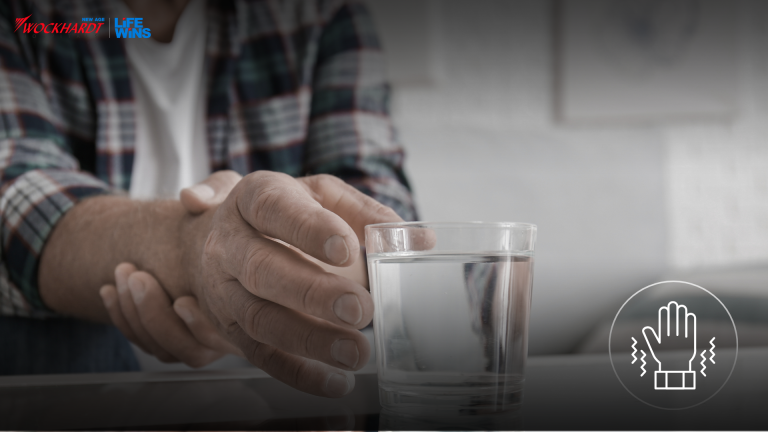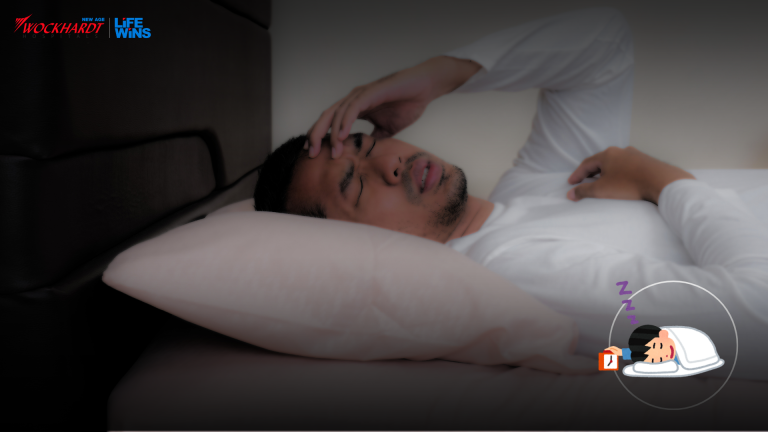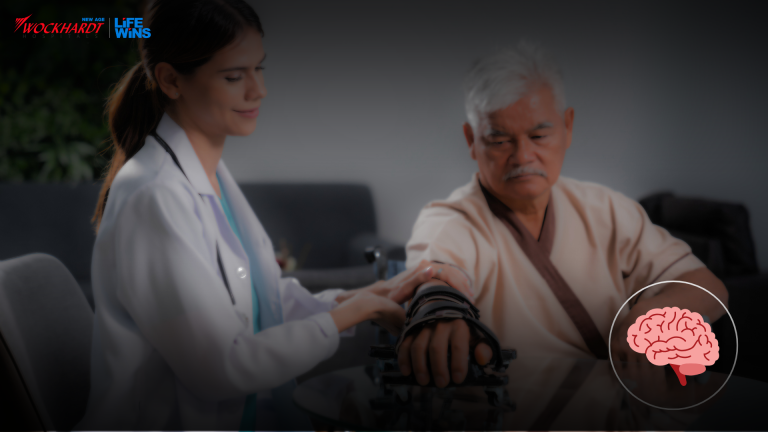Polycystic Ovary Syndrome/Disease

Polycystic Ovary Syndrome/Disease, commonly known as PCOS/PCOD, is the most common hormonal disorder affecting women of reproductive age. This condition is caused by an imbalance of reproductive hormones which can lead to a range of symptoms and complications including irregular periods, infertility and increased risk of metabolic diseases like diabetes and heart disease. Approximately 10-20% Indian females are affected by PCOD. Cause of PCOD is not known but there are several factors that may contribute to its development including: 1. Hormonal imbalances: An increase in androgens (male hormones) in women can lead to the development of PCOD 2. Genetics: PCOD may run in families, indicating a genetic component 3. Insulin resistance: This is a condition in which the body’s cells become less responsive to the effects of insulin (hormone produced by pancreas which control blood sugar levels) leading to elevated levels of insulin in the bloodstream 4. Lifestyle factors: Poor diet and lack of exercise may increase the risk of developing PCOD Symptoms of PCOD can vary from person to person, but some of the most common include irregular or missed periods, acne, weight gain and excess hair growth on the face, chest and abdomen. Women with PCOD may also experience difficulty getting pregnant due to irregular/absent ovulation (release of egg from the ovary). Treatment for PCOD is directed at managing the symptoms and generally includes lifestyle changes (reducing calories and intake of simple carbohydrates and increasing exercise), using birth control pills to regularize the menstrual cycles, reduce acne and excess hair growth. Metformin, a common medication for treating diabetes, is often used to treat insulin resistance and regulate menstrual cycles. Women with PCOD who are trying to conceive, there are several options available: Using medications to stimulate ovulation and In vitro fertilization (IVF) are most commonly used to assist women with PCOD who are struggling with infertility. Dr. Pranav GhodyMD (USA), DM (USA), FACE, CCD Consultant Endocrinologist & Diabetologist
Millets for Diabetes and Obesity

Millets are considered to be a healthy food choice for individuals with diabetes and obesity due to their high fiber content and low glycemic index (GI). Fiber is an important nutrient for people with diabetes and obesity, as it can help regulate blood glucose levels and promote satiety, which can help control weight. Millets are a good source of dietary fiber, with some varieties containing up to 10 grams of fiber per 100 grams. In addition, millets have a low GI, which means that they are digested and absorbed slowly, causing a gradual rise in blood glucose levels rather than a sudden spike. Diabetes surgery is crucial for people with diabetes, as it can help prevent blood glucose levels from becoming too high. Millets are also low in fat and calories, making them a good choice for individuals with obesity, who are trying to lose weight. Some popular varieties of millet that are recommended for individuals with diabetes and obesity include: Finger millet (Ragi): Finger millet is a good source of calcium, iron, and fiber, and has a low GI. It can be used to make porridge, dosa, and other dishes. Pearl millet (Bajra): Pearl millet is a good source of protein, fiber, and iron, and has a low GI. It can be used to make roti, khichdi, and other dishes. Foxtail millet (Kangni): Foxtail millet is a good source of protein, fiber, and iron, and has a low GI. It can be used to make porridge, upma, and other dishes. Overall, millet can be a healthy addition to the diet for individuals with diabetes and obesity and can provide a range of important nutrients and health benefits. However, as with any dietary changes, it is important to consult with a healthcare provider or registered dietitian before making significant changes to the die Dr. Honey SavlaM.B.B.S., DNB Medicine Consultant Internal Medicine
Acute kidney failure vs chronic kidney failure: Symptoms, Treatment, tips to keep kidney problems at bay

Currently, kidney failure problem is seen in a large number of people owing to various reasons where acute kidney failure happens when the kidneys are unable to filter waste products from one’s blood. When the kidneys fail to filter blood then the waste tends to get accumulated in the body and the blood’s chemical makeup will get unbalanced. Acute kidney failure is also known as acute renal failure or acute kidney injury which is progressing rapidly and is commonly seen in those who are critically ill? It is a known fact that acute kidney failure can be life-threatening and requires timely medical intervention. The Symptoms of it are shortness of breath, nausea, weakness, irregular heartbeat, fluid retention, low urine output, and chest pain. The causes of acute kidney failure ranges from simple dehydration , kidney infection, medicine allergy, poisons, kidney stones, heart related problems etc. Chronic Kidney Failure is seen when the kidneys cannot function as they are expected to. The symptoms of it are feeling sick, inability to breathe, swollen feet and ankles, and tiredness. The causes of it can be attributed to diabetes, high blood pressure, high cholesterol levels, polycystic kidney disease, blockages in the flow of urine, and mindless use of non-steroidal anti-inflammatory drugs (NSAIDs). Talking about the Treatment, “It depends upon the cause of the acute kidney failure, sometimes Kidney Dialysis may also be needed, while once chronic kidney failure is established kidney transplant is the treatment of choice/standard of care.” Some tips to keep kidney problems at bay. It will be imperative for you to maintain an optimum weight, exercise daily, drink enough water, eat a nutritious diet, and cut down on alcohol, smoking, and drugs. Check the blood pressure, blood sugar, and cholesterol levels as suggested by the doctor. Do not take any medication without the knowledge of the doctor and go for regular health checkup. Follow these tips and you will surely be able to improve your quality of life. Dr. Puneet BhuwaniaConsultant Nephrologist & Transplant PhysicianWockhardt Hospitals, Mira Road
Electric Buzzing Feeling in Body: Feet, Toes, Hands, Fingers, Arms, and Legs: Anxiety

You can have a buzzing, shaking, vibrating, or trembling sensation in your feet, toes, hands, fingers, arms, legs, or even across your entire body. This sensation may be infrequent, regular, or chronic, and it may affect only one portion of your body or move over the body. There isn’t much we can do to prevent this symptom from occurring because it typically occurs involuntarily. While some people may be able to manage this feeling by calming down or by tightening and relaxing their muscles, this isn’t a symptom that we can control very often. While some people only feel this when they move their hands, feet, arms, or legs, others feel it constantly and independently of movement. Another possibility is that the stiff muscles are merely responding to the body’s hormones. Hormones and nerves directly affect muscles, and if any or both of these systems operate improperly, it may be because of how the chemicals in their environment have affected them. One of the worst things you can do when you have anxiety is Google your symptoms. You’ll discover that neurological ailments like MS and ALS are what lead to problems like buzzing and many other kinds of disorders. If you have concerns about any new or changing symptoms, you should always consult a doctor. But don’t worry—these ailments are uncommon, and your doctor is likely to be skilled at spotting them. Make sure you are not causing yourself more worry by researching all of your symptoms and convincing yourself you have the worst possible condition. What Causes the Buzzing Sensation in Feet, Hands, Toes, and Fingers? Another possibility is that the stiff muscles are merely responding to the body’s hormones. Hormones and nerves directly affect muscles, and if any or both of these systems operate improperly, it may be because of how the chemicals in their environment have affected them. One of the worst things you can do when you have anxiety is Google your symptoms. You’ll discover that neurological ailments like MS and ALS are what lead to problems like buzzing and many other kinds of disorders. If you have concerns about any new or changing symptoms, you should always consult a doctor. But don’t worry—these ailments are uncommon, and your doctor is likely to be skilled at spotting them. Make sure you are not causing yourself more worry by researching all of your symptoms and convincing yourself you have the worst possible condition. An electric buzzing sensation in the human body can be caused by a range of causes ranging from non-severe to serious issues, such as: How Do You Get Rid of the Buzzing Feet, Hands, Toes, and Fingers? The buzzing feeling brought on by anxiety is still being studied by specialists. It is thought to have something to do with how hormones react to long-term, consistent stress in your body. The most effective strategy to halt the feelings is to deal with your anxiety. Treatment for Anxiety Disorders Drug therapy and psychotherapy are the two primary therapies for anxiety disorders. Combining these two tests may yield the best results if you’re experiencing buzzing as a result of anxiety. Exploring a few different therapies until you find the ones that work best for you may be necessary. Psychotherapy Psychotherapy, also referred to as talk therapy or psychological counseling, is working with a therapist to lessen the feelings of anxiety that you experience. It could work well as an anxiety therapy. For anxiety disorders, Cognitive Behavioral Therapy (CBT) is the most successful type of psychotherapy. Cognitive Behavioral Therapy (CBT), often a short-term treatment, teaches specific methods to help you manage symptoms and gradually resume activities you may have avoided due to anxiety. Exposure therapy is an additional form of therapy that aims to address the underlying concerns leading to anxiety disorders. It involves facilitating your interaction with things or circumstances you may have been avoiding. Additionally, your practitioner may combine exposure treatment with visualization and relaxation techniques. Medication Depending on the type of anxiety disorder you have and whether you also have other physical or mental health conditions, various types of drugs can help reduce symptoms. For example: Dr. Sonal AnandConsultant – PsychiatristWockhardt Hospitals, Mira Road To book an appointment call: +918108101104 FAQs on Electric Buzzing Feeling in Body Q. What causes an electric buzzing feeling in the body? Any sensation of “buzzing” anywhere on or in the body might be caused by stress. Not everyone experiences tingling in their extremities the same way, although anxiety and panic episodes can contribute to such sensations. Additionally, neurological disorders, including multiple sclerosis, nerve irritation or compression, and adverse drug reactions affecting the nervous system, can all lead to an electric buzzing sensation throughout the body. Q. What are the symptoms of vibration? Vibration syndrome affects the nervous system and circulation in the fingers. Warning signs and symptoms include discomfort, blanching (becoming pale and ashen), and numbness. These symptoms may necessitate a medical examination for an accurate diagnosis and course of therapy, and they may vary depending on the underlying cause of the vibration sensation. Q. What are the different types of vibrations in the human body? Physiological vibrations from the respiratory or circulatory systems, pathological vibrations from neurological disorders like Parkinson’s disease, and external vibrations from factors like machinery or transportation are some of the various types of vibrations that occur in the human body. For an accurate diagnosis and suitable treatment of related illnesses, it is essential to comprehend the origin and kind of vibrations. Q. When should I be concerned about experiencing electric buzzing in the body? If you are experiencing continuous, intense, or concurrent electric buzzing throughout your body, along with other unsettling symptoms like weakness, lack of feeling, or coordination difficulties, it is a cause for concern. Seeking medical assistance is advisable to obtain proper therapy and to rule out any significant underlying illnesses, such as neurological diseases or nerve damage. Q. Why is vibration a serious health issue? Vibration exposure, especially prolonged exposure, primarily leads
Difference between Sadness and Depression

Sadness is a common human emotion associated with feeling low in energy and spirits. It is normal to feel sad from time to time, and, just like other emotions, sadness also fades away gradually. The degree of sadness felt varies with the individual and the circumstances. This is how sadness is fundamentally different from depression. Depression is a chronic mental illness characterized by prolonged spells of sadness that don’t seem to alleviate or go away. It can affect the way an individual thinks, behaves, and feels, indirectly impacting their social, personal, occupational, and other areas of life. The good news is that depression is treatable, but it can be tough to determine on one’s own if it’s just another bad day or if it warrants a visit to a mental health specialist. Therefore, if you are feeling down or know someone who might be dealing with depression, here are some key Depression vs. sadness differences, along with guidance on how to find the help you need. Differences Between Sadness and Depression While both have very similar symptoms, understanding Depression vs. sadness will help to improve mental well-being. What is Sadness? In the simplest terms, sadness is an emotional state of unhappiness. Everyone has experienced it during stressful or somber times. It can be triggered by various events in everyday life, such as losing a job, the death of a friend, relative, or pet, failing a test, or experiencing heartbreak, among others. More often than not, sadness is associated with specific triggers, which may vary from one individual to another. However, nearly everyone has coping mechanisms, such as venting, crying, journaling, or engaging in activities that generally uplift their mood. Sadness eventually passes, but if it persists even after an extended period of time, it could develop into depression. What is Depression? Depression is a mental health problem that does not typically resolve on its own. Prolonged spells of sadness are often a sign of depression, but it encompasses more than just sadness. Depression can manifest as both emotional and physical pain, including body aches. It may feel all-encompassing, robbing you of the joy and enthusiasm you once had for things you loved. There may be moments when you laugh or find comfort, but the overwhelming feeling of sadness can seem indelible. Symptoms of Depression There are several general signs of depression. Individuals living with depression may experience multiple mental and physical symptoms that persist for longer than two weeks. Risk Factors for Depression Depression is not gender specific and can occur at any age. What causes depression is also quite complex and varies from person to person. However, there are certain risk factors that have been identified to be linked with depression. It’s also worth noting that depression is an umbrella term, and it can manifest across a spectrum. Everyone perceives and experiences depression differently. It may be mild and come in waves for some, while for others, it can be life-altering. The most severe form of depression is termed “major depressive disorder” or MDD. There are other forms of depression, such as “subclinical” and “clinical” depression, which are milder than MDD but still significant. When to Seek Help for Depression If there are at least two symptoms of depression that linger for more than 2 weeks, it might be time to reach out for help. Depression is treatable and chances are you will start feeling better soon with the right treatment. Small changes can be the beginning of a spiral. Even if it’s just a mood change or a series of bad days, it’s better to be safe than sorry. It is especially important to get help when it becomes hard for you to get through your daily life and even complete your everyday chores. Where to Seek Help for Depression Connecting to a certified mental health specialist is important to understand why you’re feeling what you’re feeling. Talking to a therapist is the best way to diagnose and treat depression. You can look for certified mental health therapists in your area and book an appointment for one-on-one counseling sessions. At Wockhardt Hospitals, we have top-certified mental health therapists dedicated to providing compassionate care and evidence-based treatments to support your mental well-being. Always remember, depression is not bigger than life. With the right and timely help, life wins, you win. Dr. Sonal AnandConsultant – PsychiatristWockhardt Hospitals, Mira Road To book an appointment call: +918108101104
Keep Your Kidneys In Good Health

Kidneys are relatively small, measuring approximately the size of our fist. However, they are essential for the functioning of the human body. By maintaining the body’s water and other constituents in the ideal proportion, they keep a person healthy. In addition to generating red blood cells, they help maintain bone health and regulate blood pressure. Unfortunately, if our kidneys begin to malfunction, we might not notice it for a while. Usually, kidney disease doesn’t cause symptoms until the condition is severe and permanent. For general health and well-being, maintaining kidney function is crucial. By keeping the kidneys in good condition, the body will filter and eliminate waste appropriately and create hormones to support bodily functions. Understanding the Types of Kidney Diseases There are three main types of kidney diseases, including: Tips To Maintain Kidney Health Here are some effective tips for keeping your kidneys healthy. Stay Fit and Active Being overweight causes your blood pressure to rise, which is harmful to your kidneys. By being active and adhering to a nutritious diet, try to maintain a healthy body weight. The chance of developing chronic kidney disease can be reduced by regular exercise. It can help lower blood pressure and improve heart health, both of which are crucial for avoiding damage to the kidneys. Aim for at least 30 minutes of exercise, such as walking four or five times a week (6000-8000 steps per day). Drink Enough Water Your kidneys benefit from continuous, regular water consumption. They will operate more effectively if you stay hydrated. Water helps your kidneys flush out toxins and sodium, reducing your risk of developing chronic kidney disease. Aim for at least 1.5 to 2 liters every day. Your urine should be straw-colored or paler. Any further darkening might be an indication of dehydration. Reduce Alcohol Alcohol can cause kidney damage. Excessive alcohol consumption may raise your blood pressure and add extra calories to your body, leading to weight gain. Limit your alcohol consumption. If you drink alcohol, keep your intake to no more than one drink for women and two for men each day. Stop Smoking Tobacco use reduces blood flow to vital organs like the kidneys, increasing the risk of kidney disease. Smoking makes it more difficult for the kidneys to eliminate toxins from the blood and raises blood pressure, which is harmful to health. It also increases the risk of kidney and bladder cancer. Additionally, smoking reduces the effectiveness of drugs used to treat high blood pressure, potentially leading to kidney disease if not well managed. Eat the Best Foods for Kidneys Kidneys digest everything an individual eats, even unhealthy fats, sugar, and salt. The long-term consequences of poor dietary habits can include hypertension, obesity, diabetes, and other conditions that harm the kidneys. So, it is important to eat plenty of fresh fruit, vegetables, and grains. Avoid processed or greasy meals, and limit your salt consumption. If you’re a diabetic, have BP, or have a family history of kidney disease, keep a regular check on your kidney health. Check Your Cholesterol, BP, and Diabetes Regularly The best method to safeguard the kidneys from harm, if you have diabetes, high blood pressure, or heart disease, is to – Keep your target blood glucose level in mind. As part of managing your diabetes, it’s crucial to check your blood glucose or blood sugar levels. Your kidneys may get harmed by high blood pressure. So, as part of a regular medical checkup, you should check your blood pressure. People who are elderly or approaching middle age should pay extra attention to this. Get Timely Diagnosis It’s critical to understand the risk of kidney disease. If you or anyone in the family has diabetes, high blood pressure, heart disease, or kidney failure in the family, it is more likely. In certain situations, your doctor may recommend particular kidney tests as a part of your routine visit. Early detection can lead to more effective treatment. Take Action Today for Your Kidney Health The most crucial thing you can do to protect your kidneys is to take care of your body to lower your risk of contracting illnesses that can stress them. One may promote optimal kidney health and reduce the risk of kidney problems by implementing these crucial techniques and getting frequent checkups. Dr. Puneet BhuwaniaConsultant Nephrologist & Transplant PhysicianWockhardt Hospitals, Mira Road To book an appointment call: +918108101104
Warning Signs and Symptoms of Dangerously Low Potassium Levels

Potassium is an important electrolyte in the body and is responsible for the function of muscles, nerves, and the heart. Very low levels of potassium are called hypokalaemia and can lead to dangerous consequences as a person may even feel too weak to move their body, experience paralysis, faint, or experience irregular heart rhythms. Vomiting, diarrhea, or use of laxatives can lead to low potassium levels while certain medications like diuretics that are commonly used to treat high blood pressure can also eliminate potassium along with excess sodium and water from the urine. In hypokalemia, the amount of potassium in the blood is too low. The normal levels of potassium range from 3.5 to 5.2 mEq/L (3.5 to 5.2 mmol/L). Anything lower than 3 mEq/L (3 mmol/L) can be considered severe hypokalaemia. While mild cases of hypokalaemia are asymptomatic, in case of dangerously low levels of potassium, one must get medical attention. Low Potassium Symptoms Signs and symptoms of low potassium depend on the severity of hypokalaemia. Mild cases are usually asymptomatic i.e., when potassium is 3-3.5 meq/l or unless the patient is either elderly or has other major medical problems like chronic kidney disease or heart failure. Symptoms usually appear once Serum K levels go below 3.0 meq/l. Dr. Bhuwania explains in detail the symptoms of hypokalaemia: Low Potassium Causes “Low potassium levels, also known as Hypokalaemia, occur when the level of potassium in the serum falls below the normal range of 3.5-5 meq/l. Potassium is one of the major electrolytes in the body, which has a direct role in the proper functioning of the heart muscle, skeletal muscles, and intestinal activity. Low potassium levels can lead to disturbances in these functions due to its role in normal cell functioning,” said Dr Kamal Verma, Senior Consultant, Department of Internal Medicine, Amrita Hospital, Faridabad. “A significant decrease in potassium levels, particularly in persons with heart disease, may result in irregular cardiac rhythms. This might cause you to feel dizzy or faint. A low potassium level might even cause your heart to stop beating. Potassium is required to maintain your muscles, neurons, and heart functioning properly. Potassium is also required for a healthy digestive system and bone health. Potassium deficiency can impair these vital bodily activities. Low potassium levels in the body can induce irregular heart rhythms, muscular weakness, and even paralysis over time,” Dr. Puneet Bhuwania, Consultant Nephrologist & Transplant Physician at Wockhardt Hospitals, Mira Road. Low Potassium Treatment Dr. Puneet BhuwaniaConsultant Nephrologist & Transplant PhysicianWockhardt Hospitals, Mira Road To book an appointment call: +918108101104 Source: https://www.hindustantimes.com/lifestyle/health/warning-signs-and-symptoms-of-dangerously-low-potassium-levels-101679753190357.html FAQs on Low Potassium Q. What happens if your potassium is low? Many health problems, including weariness, constipation, tingling feelings, irregular heart rhythms, muscular cramps, and muscle weakness, can be brought on by low potassium levels. Paralysis or respiratory failure are possible outcomes in severe instances. Q. How can I raise my potassium quickly? Eat foods high in potassium, such as spinach, bananas, oranges, and potatoes, to quickly raise your potassium levels. Other heart-healthy foods include milk, almonds, seafood, lentils, and low-salt diets. These foods are also high in potassium. Additionally, think about taking potassium supplements under a doctor’s supervision to ensure safety and the right amount. Potassium levels can also be efficiently restored by consuming liquids like sports drinks or coconut water. Q. What organ is affected by low potassium? The heart and muscles are the main organs affected by low potassium levels. Potassium is essential for sustaining healthy muscular and cardiac function. Low potassium levels can cause muscular weakness or cramping, as well as arrhythmias or abnormal heartbeats. Potassium is also necessary for strong bones and a functioning digestive system. These crucial processes in the body may be impacted by low potassium levels. Q. What are the symptoms of low potassium in females? In females, the symptoms of low potassium might include cramping in the muscles, weariness, abnormal heartbeats (arrhythmias), and weakening of the muscles. It’s also possible for them to feel numb or tingly, especially in their extremities. Q. What are the 10 signs of low potassium? Ten signs of low potassium include: Muscle weakness Muscle Cramps Fatigue and nausea Abnormal heartbeats Constipation Tingling or numbness Low blood pressure Excessive urination (polyuria) Excessive thirst (polydipsia) Paralysis in severe cases Q. What is the most common cause of low potassium? Hypokalemia, or low potassium, has several causes. The primary cause is high potassium loss in the urine as a result of prescription drugs that make you urinate more frequently. Potassium depletion can be caused by a number of things, including extended diarrhoea, vomiting, high perspiration, or the use of certain medications like diuretics.
World Tuberculosis Day: Did you Know Weak Immune System Can Also Lead To TB?

World Tuberculosis Day is observed to indicate the progress made in the fight against the disease and to progress on the commitment to eradicate the epidemic. It is also a day to spread awareness about the fact that tuberculosis is not merely a health disorder but also a social issue since malnutrition and poverty also promote to spread of the ailment. Tuberculosis is a bacterial infection that primarily affects the lungs but can also affect other parts of the body. When an infected person coughs or sneezes, the virus is spread through the air. TB is more common in people with weakened immune systems, such as those living with HIV/AIDS, malnutrition, or diabetes. India has made significant efforts to tackle TB over the years, including through the implementation of the Revised National Tuberculosis Control Programme (RNTCP) in 1997. The RNTCP has since been replaced by the National Tuberculosis Elimination Programme (NTEP) in 2017, which aims to eliminate TB in India by 2025. The Government of India has said it aims to eliminate tuberculosis (TB) by 2025. In a strict sense, TB elimination means there should be <1 case of TB for a population of 10 lacks. The World Health Organization (WHO) END TB Strategy adopted by World Health Assembly in 2014 aims to end the global TB epidemic with a target to reduce TB deaths by 95% and to cut new cases by 90% between 2015 and 2035 and to ensure that no family is burdened with catastrophic expense due to TB. In a country like India, a huge population and overcrowding in multiple places leave us the biggest challenge to curb this disease. On this world TB day, we wish to create awareness and want to make leaders at the level of community or even at the household level. Every society should appoint a leader who assesses the symptoms of the sick and encourages them to take the tests as early as possible to start treatment. Under national programs, treatment is provided free of cost and additional financial help is also given by the government. Each one should know about the symptoms of cough for more than two weeks, loss of appetite, and loss of weight as indicators of tuberculosis and should report to their doctor and get tested. Another challenge is the stigma related to this disease where people are not comfortable accepting the diagnosis or are isolated by the community once diagnosed. Such practices should be discouraged, and it should be considered an offense to stigmatize any patient. We need to ensure good ventilation in our houses and avoid overcrowded localities strictly to stop the spread. The government should aim to start more and more dedicated tuberculosis hospitals to serve the huge population. Schools and colleges should play an important role in creating awareness about tuberculosis among the youth of the society who can be the future leaders to devise better plans to eliminate tuberculosis. It is important that we understand that tuberculosis is a curable disease and if diagnosed at an early stage, ensures faster recovery. In this era of artificial intelligence, we should put the robot to our use to serve this huge population at a personalized level and ensure full treatment support to the needy. Let us pledge to play our role sincerely to “END TB”. We have a 102-year-old vaccine, BCG, against tuberculosis, which hardly protects against disease in adolescents and adults. Hence the need arises for a better and more effective vaccine for the future. Dr. Honey Savla Internal MedicineWockhardt Hospitals, Mumbai Central
Deviated Septum, Adenoiditis, Sinusitis In Children

Early diagnosis and treatment of sinusitis are important to avoid complications. A child with a deviated septum may also have enlarged adenoids. Learn more here. Sinusitis In Children If your child is having breathing difficulties, recurrent cold and cough attacks, or he/she is breathing through the mouth, it’s time to consult the ENT. These are signs and symptoms indicative of deviated septum, adenoiditis, and sinusitis. Read on to know more about these conditions from Dr. Sheetal Radia, ENT & Head Neck Surgeon, Wockhardt Hospitals in Mira Road said. Sinusitis Causes Sinusitis happens when the sinuses get filled with water and pus. It can occur due to recurrent cold attacks, bacterial and viral infections, structural abnormalities in the nose, turbinate bone enlargement leading to nasal obstruction, nasal secretions, dust, pollutants, pet, and environmental allergies. Sinusitis Symptoms A stuffy nose, runny nose, severe headaches, recurrent headaches, redness and swelling of eyes, pain in eyes, recurrent throat pain, throat irritation, change in voice, post nasal drip leading to foul breath, and snoring at night are symptoms associated with sinusitis. Sinusitis Complications If not treated at the right time, sinusitis can lead to blurry vision, redness of eyes, swelling of eyelids, recurrent throat infections that may invite tonsillitis, laryngitis (infection and inflammation of the larynx that is the voice box), chronic nasal obstruction and polyps in sinuses (swelling filled with water and infected pus). Polyps can cause chronic nasal obstruction leading to breathing problems. Sinusitis Diagnosis A doctor may do a physical checkup and ask about symptoms. Looking inside the nose and feeling for any soreness in the face and nose are possible parts of the evaluation. A physical examination, an evaluation of the medical history, and occasionally imaging tests are necessary for a sinusitis diagnosis. Here are some methods to rule out other illnesses and identify chronic sinusitis: Parents should watch out for sinusitis symptoms and consult the ENT on time to avoid complications. If nasal polyps are detected, surgery will be required to remove them. If the sinusitis is caused by deviated nasal septum, one needs septal correction surgery to straighten the nasal bone, and the surgery can take up to 2 hours. Sinusitis Treatment One with a deviated septum may suffer from adenoiditis (inflammation of the adenoid tissue) and sinusitis. Such patients may also have enlarged adenoids (type of tonsils behind the nose where the nose and throat meet or nasopharynx). Not only enlarged adenoids can cause breathing problems but they can also interfere with the normal growth of the child. Hence, treating adenoids at the right time is important for pediatric patients. Dr. Sheetal RadiaENT & Head Neck SurgeonWockhardt Hospitals, Mira Road said To book an appointment call: +918108101104 Source: https://www.thehealthsite.com/photo-gallery/deviated-septum-adenoiditis-sinusitis-in-children-symptoms-parents-should-look-out-for-963724/sinusitis-in-children-963725/ FAQs on Adenoids and Deviated Septum Q. Can a deviated septum cause sinusitis? Indeed, a deviated septum can exacerbate sinusitis by blocking the sinuses’ natural drainage, which causes swelling and congestion. The divergence may result in places where mucus collects, raising the possibility of infection. In some situations, it could be advised to surgically repair the deviated septum to relieve the symptoms of sinusitis. Q. How do you treat a deviated septum in a child? When treating a child with a deviated septum, conservative methods like nasal saline rinses and decongestants are usually used to treat symptoms like congestion. After a thorough examination by an ear, nose, and throat expert, surgical intervention, such as Septoplasty or turbinate reduction, may be considered in severe instances that result in breathing difficulties or recurrent sinus infections. Q. Can adenoids cause a deviated septum? While adenoids can not directly cause a deviated septum, they can aggravate pre-existing septal abnormalities by contributing to nasal obstruction and changed airflow patterns. Adenoids that are too big might block the nasal airway, causing mouth breathing and putting more pressure on the nasal septum, which over time may cause the septum to deviate. Certain symptoms related to a deviated septum may be relieved by treating adenoid enlargement. Q. What are the symptoms of inflamed adenoids in children? Children’s inflamed adenoids might cause the following symptoms: Congestion in the nose and trouble breathing through it Continuous mouth breathing Snoring while asleep Sleep apnea, in which a child’s breathing periodically pauses for a brief period of time while they’re asleep Persistent post-nasal drip or nasal discharge Middle ear fluid accumulation or recurrent infections Painful throat or trouble swallowing. Q. Is there a correlation between sinusitis, adenoids, and allergies? There is a connection between allergies, adenoids, and sinusitis. Because it obstructs nasal airflow, adenoid growth can aggravate sinusitis. The symptoms of sinusitis can be made worse by allergies that inflame the adenoids and nasal passages. Effective management of sinusitis may be aided by addressing adenoid problems and allergies. Q. Can sinusitis with adenoids be a chronic condition? Adenoidal sinusitis has the potential to progress. Chronic or recurring sinus infections can result from enlarged parotid glands that cause nasal congestion and poor sinus outflow. Treatment for sinusitis must be combined with the management of underlying adenoid problems in order to address and avoid persistent symptoms. Q. What are the common symptoms associated with adenoids and deviated septum? A deviated septum and adenoids are frequently accompanied by the following symptoms: Having trouble breathing through your nose and congestion in the nose. Mouth breathing, particularly during the night Disrupted sleep habits and snoring Recurring sinus infections Persistent post-nasal drip or cough Fluid accumulation in the middle ear or ear infections Q. What are the potential complications if deviated septum and adenoids are left untreated? It is not possible for a deviated septum to go away on its own. If treatment is not received in time, there’s a higher chance that things will get worse. A deviated septum and untreated adenoids can cause a number of issues, such as: Persistent sinus infections Unusual facial growth Hearing problems and recurring ear infections Breathing disorders while sleeping, such as sleep apnea Impaired quality of life owing to continuous nasal congestion and breathing issues.
6 transplants completed at Mumbai hospital within 24 hours

The three deceased donations in a 48-hour span led to a city hospital completing six transplants in 24 hours. “We began on March 9 when an in-house deceased donation helped us get a liver and a kidney for two patients registered with us,” said Dr. Tarang Gianchandani. As these transplants were underway, the Girgaum hospital got a lung donation from a hospital in Surat. “Even as our doctors were busy with these operations, we got donations of a lung, heart, and liver from Umrao Wockhardt Hospitals in Mira Road,” she said, adding that some planned surgeries were rescheduled as transplants were given priority. A total of 25 surgeons, 30 nurses, 15 support staff, and four transplant coordinators were involved in six transplants. “Three donor families helped five families savor a second chance at life,” said the doctor.















